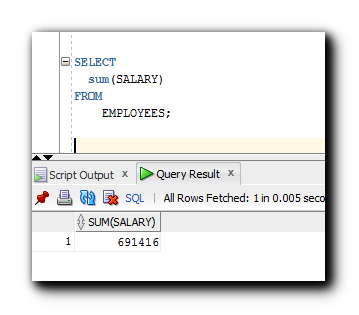I had a very simple question: Does oracle allow multiple WITH AS in a single sql statement. SQL multiple columns in IN clause. What is the advantage and alternative for With clause other than using functions to return the table using type objects. I have inherited some SQL from another developer which needs to be updated and I am drawing a blank here. Currently the select has multiple conditions in the where clause and returns data even if all the conditions are false.

What we need is to return rows ONLY if atleast one of the conditions is true. In this section i would like to explain the syntax as well as examples of With clause in oracle. In simple With Clause is used to simply the complex SQL. You can improve the performance of the query by using with clause.
SQL Search Query with multiple columns needs to. You can specify multiple expressions in the order_by_ clause. WITH clause - the so-called recursive query or recursive CTE technique.
Rows with the same value for the first expression are then sorted based on their values for the second expression, and so on. This clause implements SQL -driven. In this post I am going to give you an explanation on how to use it, and WHY to use. Connect By with multiple tables - what clauses are needed.
Create View hierarchy_versions As Select 1. The RETURNING clause can return multiple rows of data, in which case you will use the RETURNING BULK COLLECT INTO form. Can you include multiple functions in a single select. SQL is a language that is generic to all database platforms. Using IN (1854) should work anywhere.
Example 6: WHERE Clause with IN. The SQL WHERE clause can be used with multiple criteria as we’ve just seen. Every SELECT clause has to have a corresponding FROM clause , and vice versa.
SQL SELECT with DISTINCT on multiple columns : Multiple fields may also be added with DISTINCT clause. DISTINCT will eliminate those rows where all the selected fields. Besides the ON clause , it is possible to use the USING clause to specify which columns to test for equality when joining tables. The following illustrates the syntax of the INNER JOIN with the USING clause.
Oracle INNER JOIN with USING clause. The SELECT statement comes immediately after the AS keyword. In this example, the employee_id column in the emplolyees table and department_id in departments table are joined using the ON clause. Wherever a employee_id in the EMPLOYEES table equals a department ID in the DEPARTMENTS table, the row is returned.
You can then do some optimizations with it like turning it into a temp table using materialize hint. If the SELECT INTO clause attempts to load a value into a variable that is the wrong datatype, or not large enough to contain the value, an exception is raised. Although a SELECT INTO can only return one row of data, SELECT INTO can return multiple columns into multiple variables.
Bulk Collect Into” statement selects multiple data from a column and stores it into a SQL Collection. Syntax of Bulk Collect clause with Select -Into statement. A subquery is a SQL SELECT statement that is contained within another SELECT statement. Subqueries can appear in various parts of a query, including the SELECT clause , the FROM clause , the WHERE clause and the HAVING clause. I can see why you would think the second query should work.
The IN clause has different meanings in SQL. The first is similar to the EXISTS clause , and operates against a result set. Multiple columns update, select from different table I work a lot with Data Warehouse data, where we many times have duplicate data for speed purposes, etc.
An some times, rater than using a ginormous INSERT or UPDATE statement, I actually build the records first with mostly empty columns, and then fill in a few columns at the time. At a customer site, I’ve recently encountered a report where a programmer needed to count quite a bit of stuff from a single table.
Keine Kommentare:
Kommentar veröffentlichen
Hinweis: Nur ein Mitglied dieses Blogs kann Kommentare posten.